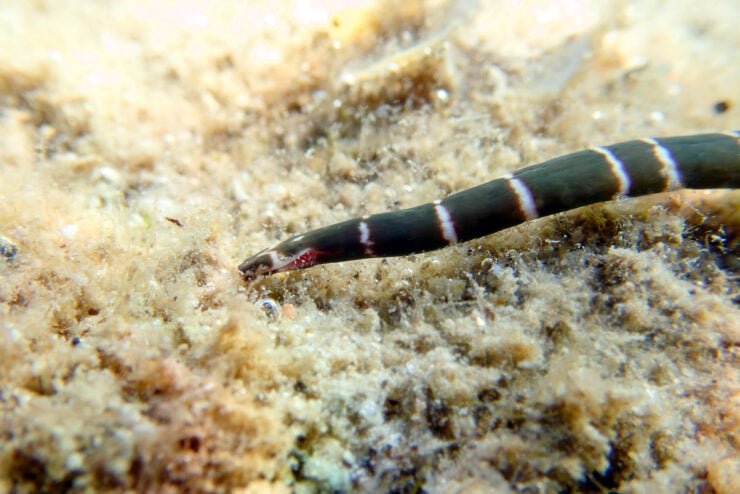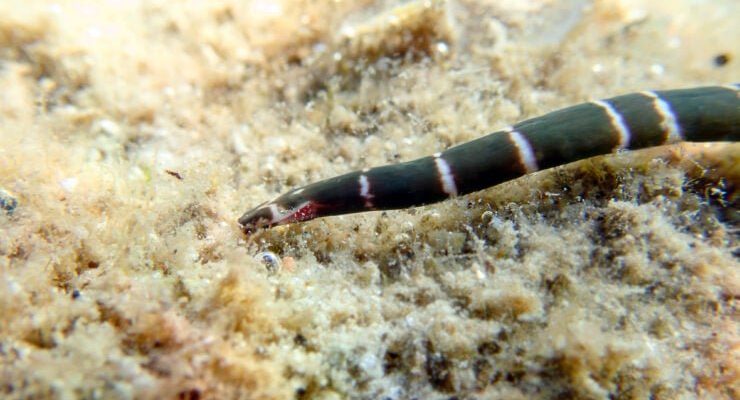
The answer isn’t a simple yes or no. Ribbon worms, part of the phylum Nemertea, have specific needs that can make or break their chances of survival in your tank. Let’s dive deep into all the factors you should consider if you’re thinking about keeping one as a pet. From their habitat requirements to feeding habits, we’ll cover everything you need to know to help you make an informed decision about bringing these intriguing creatures into your aquatic world.
What Are Ribbon Worms?
Ribbon worms are soft-bodied, elongated animals that can reach impressive lengths—some species can grow up to several meters long! Looking at one, you might think it’s a colorful piece of ribbon floating in the water. Their bodies are made up of a unique structure, allowing them to extend and contract.
These worms are not just beautiful; they play an important role in their ecosystems. They’re often found in marine environments, burrowing in sand or hiding among rocks. Their diet mainly consists of small invertebrates, such as crustaceans, which they catch using a specialized feeding structure called a proboscis. This slimy little appendage can be quite a sight, as it often shoots out to snag prey.
When thinking about whether ribbon worms can survive in aquariums, you first have to consider their natural habitat. They thrive in environments that mimic what they’re used to in the wild—think sandy or muddy substrates and plenty of hiding spots.
Do Ribbon Worms Make Good Aquarium Pets?
Here’s the thing: while ribbon worms are captivating and can add a unique touch to your aquarium, they’re not the best choice for every hobbyist. Their care requires specific conditions that can be challenging for beginners.
For instance, ribbon worms prefer stable water conditions. Sudden changes in temperature, salinity, or pH can stress them out and lead to health problems. You might have a beautiful setup, but if the water isn’t just right, those vibrant colors can quickly fade.
Additionally, these worms have a tendency to be *escaped artists*. If your aquarium doesn’t have a well-sealed lid, you might find your ribbon worm somewhere it shouldn’t be, which can be stressful for both you and the worm. When considering their care, it’s essential to weigh the benefits and challenges before making the leap.
Habitat Requirements for Ribbon Worms
Creating the perfect home for your ribbon worm is crucial! They thrive in environments similar to their natural habitats. Here are some key factors to consider when setting up your aquarium:
- Substrate: A soft, sandy substrate is ideal. This allows ribbon worms to burrow and feel secure.
- Water Conditions: Aim for stable salinity levels, typically around 30-35 ppt (parts per thousand), depending on the species. Check pH levels regularly to keep them in the safe zone of 7.8 to 8.4.
- Temperature: Most ribbon worms prefer cooler temperatures of around 60-70°F (15-21°C). A reliable heater or cooling system can help maintain this range.
Maintaining these parameters is key to ensuring the health and happiness of your ribbon worm. If you’re unsure about how to achieve these conditions, don’t hesitate to do some research or seek advice from an aquarium professional!
Feeding Your Ribbon Worm
Feeding ribbon worms can be an interesting experience. They primarily feed on small invertebrates, which means you might need to provide a varied diet to keep them healthy. Here’s what you need to know about their feeding habits:
- Prey Type: Ribbon worms enjoy a diet of small crustaceans, like brine shrimp and amphipods. Some species may also eat polychaete worms or small fish.
- Feeding Frequency: Feed them a couple of times a week, but be careful not to overfeed. You want to mimic their natural feeding in the wild—overfeeding can pollute the water.
- Live Food: Live foods are typically the best choice, as they stimulate the worm’s natural hunting instincts. You might even enjoy watching your ribbon worm hunt and catch its prey!
Honestly, it can be a rewarding experience to observe how these creatures behave during feeding. Just remember to pay attention to your ribbon worm’s activity levels; if it doesn’t seem interested in eating, it could be a sign that something in the environment isn’t right.
Potential Challenges in Keeping Ribbon Worms
While ribbon worms can be exciting to keep, there are challenges involved. Here are some common problems that may arise:
- Water Quality: Keeping the water conditions stable is vital. Regular testing and maintenance of water quality can help prevent stress for your worm.
- Compatibility: Ribbon worms can be territorial. If you decide to keep tank mates, do your research to ensure compatibility and avoid conflicts.
- Escape Artists: As mentioned before, ribbon worms can be quite crafty. Look for ways to secure your tank, as they can squeeze through surprisingly small openings.
If you’re up for the challenge, the rewards of keeping ribbon worms can be well worth the effort. Just ensure that you’re prepared for the nuances of their care!
So, can ribbon worms survive in aquariums? Yes, they can, but they require specific conditions and careful attention. If you’re willing to put in the effort to create a suitable environment and meet their dietary needs, these fascinating creatures can make a unique addition to your aquatic setup. Just remember to be patient and understanding, as they may take some time to adjust to their new home.
Ultimately, keeping ribbon worms is not for everyone. However, if you’re intrigued by the challenge and want to add an extraordinary twist to your aquarium experience, go for it! Just be prepared to learn a lot along the way and enjoy the company of these colorful, captivating creatures. Your aquarium could become a vibrant underwater world, complete with the charm of a ribbon worm.

